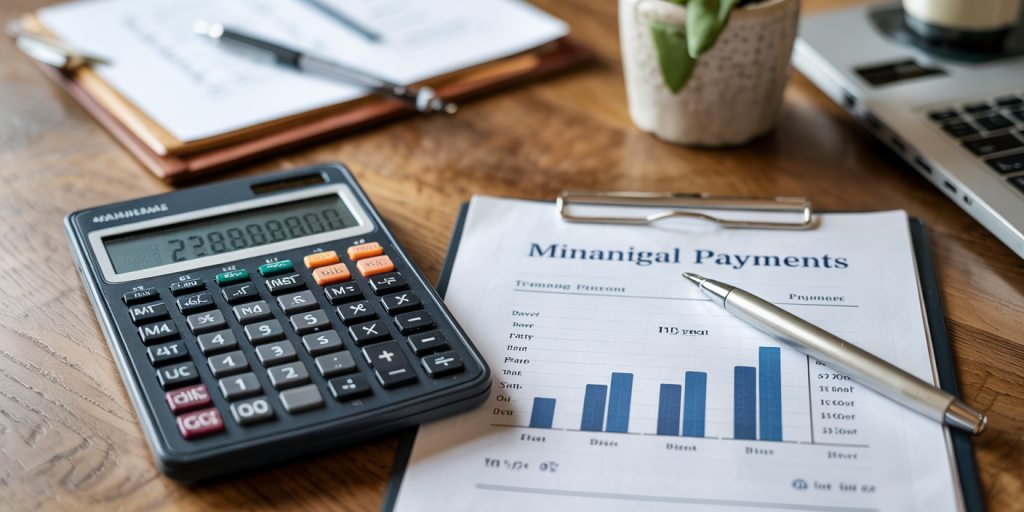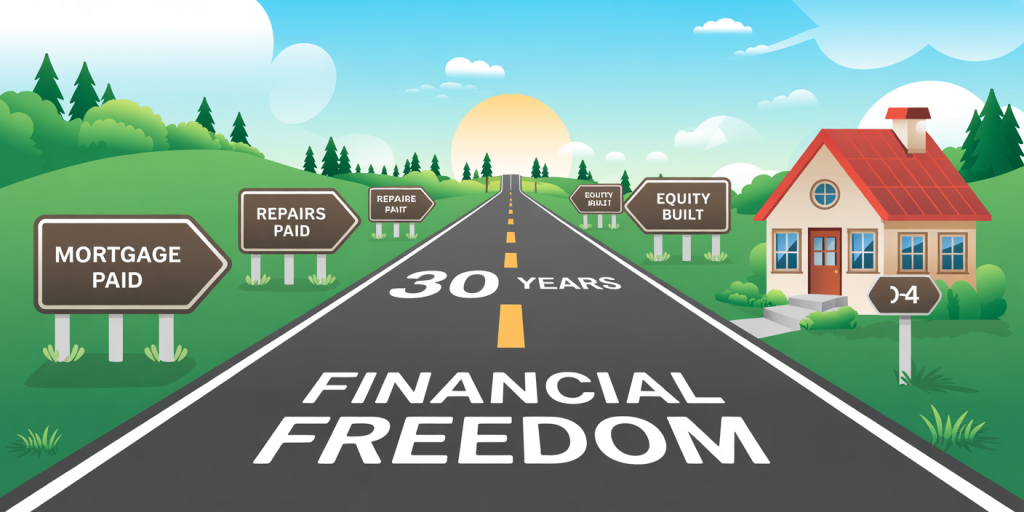The True Cost of Homeownership Over 30 Years (And How to Budget for It)
Anúncios
Buying a home is one of the biggest financial milestones in most people’s lives. It represents stability, ownership, and a place to grow—whether alone, with a partner, or as a family. But while the monthly mortgage payment often takes center stage in conversations about affordability, it’s just one part of the puzzle.
Over the course of 30 years—the average length of a fixed-rate mortgage—the total cost of homeownership can far exceed the sticker price of the house. From interest payments and property taxes to maintenance and insurance, homeowners must prepare for a range of predictable and unexpected costs.
In this article, we’ll break down the true long-term cost of owning a home over three decades, and more importantly, how to budget intelligently for each component to protect your financial future.
Anúncios
1. The Mortgage: Principal and Interest

Let’s start with the most obvious expense—your mortgage. When you take out a loan to purchase a home, you agree to repay the principal (the borrowed amount) plus interest over time.
Anúncios
Example:
Suppose you purchase a home for $350,000 with a 20% down payment ($70,000) and finance the remaining $280,000 at a 6% interest rate on a 30-year fixed-rate mortgage.
Using a mortgage calculator, you’ll find:
-
Monthly principal and interest: $1,678
-
Total over 30 years: $604,080
That’s $324,080 in interest payments—nearly as much as the loan itself!
💡 Tip: Even small interest rate reductions (via good credit or buying points) can save you tens of thousands of dollars over the life of your loan.
2. Property Taxes
Property taxes are recurring local government charges based on your home’s assessed value. They fund services like schools, roads, and emergency services.
National Average:
-
About 1.1% of your home’s value per year (though this varies widely by state and city)
For a $350,000 home:
-
Annual property tax ≈ $3,850
-
30-year cost (assuming steady value): $115,500
But keep in mind: if your property value increases, your taxes likely will too.
💡 Tip: Research property tax trends in your area and include projected increases in your long-term budget.
3. Homeowners Insurance
Insurance protects your home from risks like fire, theft, weather damage, and liability. Most lenders require it.
National Average:
-
About $1,200/year, depending on location and coverage
Over 30 years:
-
$36,000
If you live in a disaster-prone area (e.g., hurricanes or wildfires), premiums may be significantly higher.
💡 Tip: Bundle home and auto insurance for discounts, and reassess coverage annually to ensure it reflects your home’s current value.
4. Private Mortgage Insurance (PMI)
If your down payment is less than 20%, you’ll likely be required to pay PMI, which protects the lender in case of default.
Average Cost:
-
0.5%–1.5% of the original loan per year
For a $280,000 mortgage at 1% PMI:
-
Annual cost: $2,800
-
Until you reach 20% equity (usually 5–10 years): potential cost of $14,000–$28,000
💡 Tip: Aim for at least a 20% down payment if possible, or plan ahead to refinance and remove PMI once you’ve built equity.
5. Maintenance and Repairs
This is the most underestimated category of homeownership. Unlike renters, homeowners are on the hook for everything—from a leaky faucet to a failing roof.
Rule of Thumb:
-
Save 1%–2% of home value per year for maintenance
For a $350,000 home:
-
Annual maintenance: $3,500–$7,000
-
Over 30 years: $105,000–$210,000
This includes repairs, painting, replacing appliances, HVAC maintenance, lawn care, plumbing, and roofing.
💡 Tip: Set up a dedicated home maintenance savings fund. If your home is older, lean toward 2% or more.
6. Utilities and Services
![]()
You’ll also pay for:
-
Electricity
-
Heating/cooling (gas or oil)
-
Water and sewage
-
Trash removal
-
Internet and cable
National Average:
-
Around $300–$500/month, depending on size, climate, and usage
At $400/month:
-
Annual cost: $4,800
-
30-year total: $144,000
💡 Tip: Make your home energy-efficient with smart thermostats, LED lighting, and proper insulation to reduce utility bills over time.
7. HOA Fees (If Applicable)
If your home is part of a homeowners association (HOA), you’ll pay monthly or annual fees for shared amenities and services like landscaping, snow removal, and community pools.
Average HOA Fee:
-
$200–$400/month, depending on location and amenities
At $300/month:
-
Annual: $3,600
-
Over 30 years: $108,000
💡 Tip: Review HOA rules and fee history before buying. Some HOAs increase fees frequently or have surprise special assessments.
8. Renovations and Upgrades
While optional, many homeowners eventually upgrade their kitchens, bathrooms, floors, or outdoor spaces to increase comfort or value.
National Averages:
-
Kitchen remodel: $15,000–$30,000
-
Bathroom upgrade: $10,000
-
Flooring: $5,000–$15,000
-
Landscaping or deck: $3,000–$10,000
Over 30 years, you could easily spend $50,000–$100,000 or more on improvements.
💡 Tip: Budget 10%–15% of your home’s value across 30 years for upgrades—and focus on projects that increase resale value.
9. Closing Costs and Selling Expenses
Homeownership begins and ends with transaction fees:
-
Closing Costs (when buying): Typically 2%–5% of the home’s price
-
For $350,000 home: $7,000–$17,500
-
-
Selling Costs (agent commissions, staging, repairs): About 6% of selling price
-
For $450,000 resale: $27,000
-
💡 Tip: Plan to live in your home at least 5–7 years to offset closing costs and build equity before selling.
10. Inflation and Market Variables
While this article uses today’s averages, costs will likely rise due to inflation.
Assuming a modest 2.5% annual inflation, a $3,500 expense today could cost over $7,000 in 30 years.
That’s why your budget must include room for rising expenses, and why long-term planning matters more than ever.
How to Budget for 30 Years of Homeownership
-
Don’t Buy at the Top of Your Budget
Lenders approve you based on gross income—not take-home pay. Aim for a mortgage that doesn’t exceed 28% of your monthly income. -
Use the 5-Year Rule
If you’re unsure whether you’ll stay for at least five years, renting may be more cost-effective. -
Create a Housing Emergency Fund
Save 3–6 months of mortgage and maintenance expenses in a separate account for unexpected issues. -
Automate Annual and Quarterly Reviews
Track property tax changes, maintenance needs, and insurance premiums regularly. -
Invest Alongside Homeownership
Don’t tie up all your wealth in your house. Keep contributing to retirement and diversified investments.
Final Thoughts

Homeownership is a powerful wealth-building tool—but only if approached with a full understanding of its long-term costs. While a mortgage may be your largest monthly expense, it’s far from the only one. Over 30 years, hidden costs can add hundreds of thousands of dollars to the true price of homeownership.
By budgeting beyond the down payment and monthly mortgage—accounting for maintenance, taxes, insurance, and inflation—you can enjoy the benefits of homeownership without being blindsided by the financial realities.
The best time to plan for 30 years of ownership is before the first day begins.
Post Comment